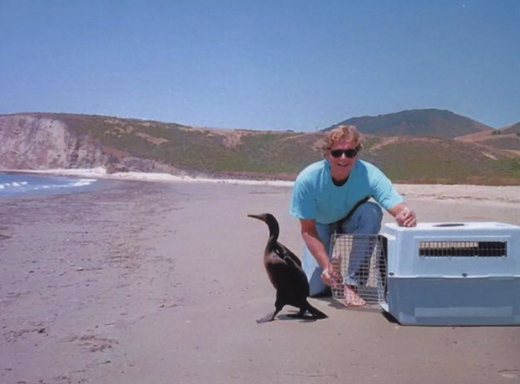Our Story
A Legacy of Care, A Future of Coexistence
Wild Welcome is a project of the Santa Barbara Wildlife Care Network (SBWCN).
With Wild Welcome, we’re expanding our mission to include long-term coexistence and helping our communities (both wild and human) mutually thrive.
In 1988, a small but passionate group of wildlife lovers came together to meet a growing need—rescuing and rehabilitating injured and orphaned wildlife in the Santa Barbara area. What began as a grassroots effort, with volunteers caring for animals in their homes, evolved into the Santa Barbara Wildlife Care Network (SBWCN)—a dedicated wildlife rescue and rehabilitation organization. Over the decades, SBWCN expanded from makeshift facilities to a permanent home, growing into a trusted resource that now serves thousands of wild animals and community members every year.
Wild Welcome is a project of the Santa Barbara Wildlife Care Network, and builds on this strong foundation. With Wild Welcome, we’re expanding our mission to include long-term coexistence and helping our communities (both wild and human) mutually thrive. While SBWCN continues its vital rehabilitation work, Wild Welcome empowers people to protect wildlife before they need saving. By helping communities understand local species, prevent common conflicts, and create wildlife-friendly spaces, Wild Welcome transforms the way we interact with the animals around us—turning moments of rescue into movements of coexistence.
This project is a celebration of the wild world just outside our doors. It’s an invitation to be part of a future where people and wildlife thrive together. Explore the site, learn how to take action, and join us in shaping a world that truly welcomes wildlife.

WILD WELCOME:
Our Mission & Vision
Wild Welcome exists to transform the way people see and interact with wildlife. Our mission is to help communities and wild animals thrive together through education, action, and conservation. By providing practical guidance, engaging storytelling, and science-backed resources, we empower people to see wildlife as neighbors, not nuisances. Whether it's learning how to create wildlife-friendly spaces, understanding when an animal needs help, or taking simple steps to prevent harm, Wild Welcome gives everyone the tools to make a positive impact.
We believe that when people understand wildlife, they are more likely to protect it. That’s why we focus on proactive conservation—helping people prevent human-wildlife conflicts before they happen, rather than just reacting to them. We connect communities with the knowledge they need to coexist with nature, ensuring that every interaction with wildlife is informed by respect, responsibility, and care.
Our vision is a world where wildlife is not just rescued, but truly welcomed. A world where every community takes an active role in conservation, where small everyday choices—like securing trash, planting native plants, or keeping pets supervised—add up to lasting change. Through Wild Welcome, we are building a future where humans and animals share space in harmony, not competition.
This is more than a website—it’s an invitation to learn, engage, and take action. Whether you’re here to explore wildlife stories, find ways to help in your own backyard, or discover new ways to coexist with nature, Wild Welcome is your guide. Join us in shaping a more wildlife-friendly world, one small action at a time.




